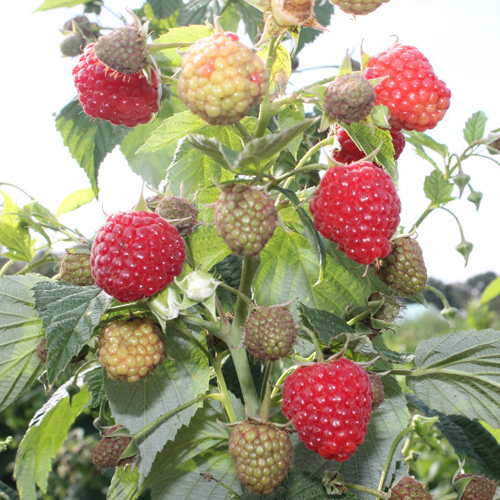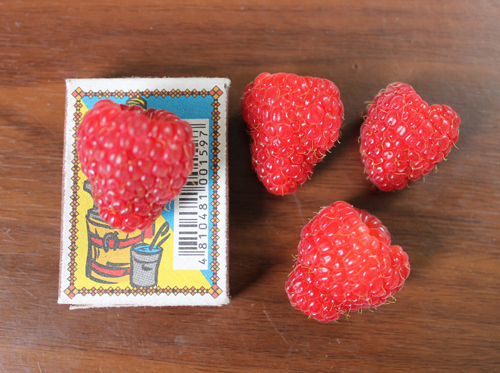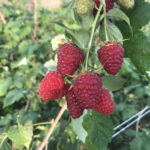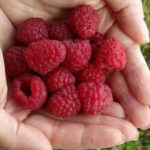Raspberry variety Polana (Polyana)
One of the first remontant varieties of raspberries to enter the Russian horticultural market were two Polish sisters Shelf and Polana. Despite universal recognition and already quite widespread, confusion still arises and disputes continue related to one of our heroines. The confusion is mainly due to the similarity in the names, many people think that the two varieties are one and the same variety. Or, on the contrary, that Polana and Polyana are two different. In fact, the difference in this case is simply who reads in Russian the Polish name of the heroine of our article - Polana. And the controversy over its taste will probably never subside. For the first it is tasty, for the second it is sour, for the third it is sweet and sour, and so on ad infinitum. And, of course, the polemics of Polka's fans and Polana's followers regularly stir up dacha forums. Who is really right? Which one is better? All this will be discussed below.

History of creation
This remontant variety comes from Sadowniczym Zakladzie Doswiadczalnym Instytutu Sadownictwa i Kwiaciarstwa in Brzezna, Poland. It was brought up by Dr. Jan Danek, a leading specialist in the field of breeding and technology of raspberry cultivation in Poland. Two well-known remontant varieties were crossed - the legendary American pioneer in its class Haritage and the Swiss Zeva Herbstfrnte. Polana was registered in the Register of Varieties in 1991 and automatically received patent protection (license).
Description
The bush is quite vigorous, it gives a lot of replacement shoots, so there will be no problems with reproduction. The shoots are powerful, erect, green, 2-4 cm thick, depending on the age of the raspberry, under the weight of a huge number of ripening berries, they can tend to the ground in the aisle, so it is advisable to tie or use a trellis for the convenience of picking and caring for the plant. The height of the stems is mainly 1.2-1.5 meters, but with good agricultural technology they can grow up to 1.8 meters. Shoots are sparsely covered with dark soft spines. The leaves are dark green, medium-sized, oval in shape.

Polana's berries are leveled, large, dense, wide, elongated-conical in shape. The fruits have an excellent presentation, there is a large percentage of 1st class berries. Drupes are small, tightly interconnected, practically not felt when eating raspberries. Fruits of a beautiful deep red color with shine.
The taste is good, but only for those who are not spoiled by other varieties. No frills, sweet and sour - common and simple raspberry flavor. In summer it is worse, in autumn it is better. Depending on the weather and the time of year, the berries may contain more acid or sugar. The fruits have an average weight of 4-5 grams. It is possible to get up to 5 kg of harvest from a bush, depending on the number of fruiting shoots. The total yield is 10-12 tons per hectare. But there is information on productivity in small farms, where it is easier to monitor the provision of raspberries with everything necessary and the condition of the plants themselves - in this case, it is possible to collect up to 20 tons of berries per hectare.

Fruiting on the shoots of the current year begins quite early among the remontant varieties, from mid-July in the southern regions, and continues until the end of October-early November. Until this time, the plant manages to give almost the entire crop, about 80%. The first berries ripen from the top to half of the stem. They are easily removed from the bush, with a "dry separation", do not crumble. The plant can be left for re-bearing by cutting off the spent part in late autumn or early spring, this has been tested by some gardeners in practice. This possibility to use Polana as a real "tutimer" is also indicated in her native Polish sources. She showed good results, without prejudice to the repeated autumn harvest. Re-fruiting on two-year-old shoots begins early in the "traditional" ripening period of summer raspberries.
Ripe fruits retain their freshness and presentation for a long time, tolerate transportation well.These characteristics are further improved by placing berries in the refrigerator immediately after picking and storing them at temperatures from + 2 ° C to + 8 ° C. The variety is universal, suitable for growing in open ground on an industrial scale, in large containers with a volume of 10 liters, under shelters, in closed ground (greenhouses). Also, this raspberry is perfect for cultivation in an ordinary country house. The fruits are suitable both for fresh consumption and for processing, canning and freezing.

Given the confusion with the names and the controversy about the pros and cons of Polana and Polka, I would like to clarify a little. Therefore, let us compare these two remontants according to the main criteria.
Shelf Benefits
- It is much tastier and sweeter than its rival.
- She has better transportability and keeping quality of fruits.
Polana's advantages
- Its yield is several times higher than that of the Shelf.
- It is more resistant to diseases and pests.
- Produces more root growth. For reproduction, this is a plus, but for caring for a plant, it is a minus.
- Its stems are not as densely studded as those of Polka, and the thorns themselves are softer.
- Polana berries are easier and faster to pick, they do not hide under the leaves. But in the summer heat, this is a disadvantage, since the fruits will bake faster in the sun.
- These raspberries ripen earlier than their rival.
- This is a real workhorse, unpretentious to the soil, growing conditions and agricultural technology. From an agrotechnical point of view, it can be characterized as follows: minimum care - maximum return. But, of course, within reasonable limits. The cultivation of Polana, for all its unpretentiousness, should not be left to chance.
- This variety can be grown without trellis. But this is really a moot point. Under the weight of the crop, the bush still "falls apart" to the sides.
- Despite all the advantages and unpretentiousness, to unlock the full potential of raspberries in yield and quality of berries, it is imperative to ensure regular watering and planting in a sunny place.
Make the final conclusions about these two remontants yourself, but it is better, of course, to draw them from personal experience by planting both of these excellent varieties. There will be no disappointment for sure, we are completely sure of that. Finally, I would like to note one more point. The cost of planting material for these varieties is much lower than the prices for newfangled novelties, but do not purchase seedlings in unverified places or from those who sell literally for a penny. High-quality raspberry planting material cannot be very cheap, there is a high probability of buying outright garbage with a small or even diseased root system.
Author: Maxim Zarechny.









In the spring I planted Polana, now it's October. I collected quite a few large, but not very tasty berries. I expected a better result. My subjective assessment is a four with a minus.
So they will not be tasty and sweet. To enjoy the taste, you need to add other varieties, for example, the same Joan Jay and others.
I’m probably spoiled with delicious raspberries, maybe that’s why I removed Polana from my plot. Honestly, she gave her a chance to rehabilitate herself, but she could not stand the competition with Joan J. (Joan G.). Main complaints: taste and very modest yield with decent agricultural technology.
But in any case, my assessment is subjective, because when growing raspberries, the composition of the soil, the region and climatic conditions play an important role. My mother, for example, at the dacha (the distance between our plots is about 50 kilometers) Polana is gorgeous, gives two harvests a year, the second is very plentiful and until freezing.
It is strange, because Polana is appreciated for her "fighting" qualities and very high yield.Unless it is practically not watered and not taken care of at all. But I won't argue, it happens)))
And there is nothing to compare to taste, DD is one of the most delicious remas. And when grown "for yourself", of course, it is better. But in terms of resistance to various negative phenomena, it is ahead. And the ability, even with them, to bear fruit abundantly and efficiently. Polana is basically a purely market variety. By the way, is your DD off in Nikopol? Now this is a very big problem for him in Ukraine.
That rare case when first tasting the berries, then buying. I rested in Mirgorod at the end of August - and almost every day I went to the market for raspberries. In the end, she persuaded the saleswoman and the seedlings. I was immediately warned - it grows very quickly. Either remove shoots, or plant far away, forming a bed. I don't really like the first summer fruiting, I keep the variety for the sake of the second wave - it is in September and warm October that the raspberries are not large, but very fragrant and sweet, dense. During this period, apples are fresh in the garden, I don't really like them, so raspberries save me. I put it in plastic cups and take it with me to the car - it takes half a day perfectly, it doesn't drain. It tolerates shading well during the day, but it is demanding of water - it becomes very shallow with a lack of watering.